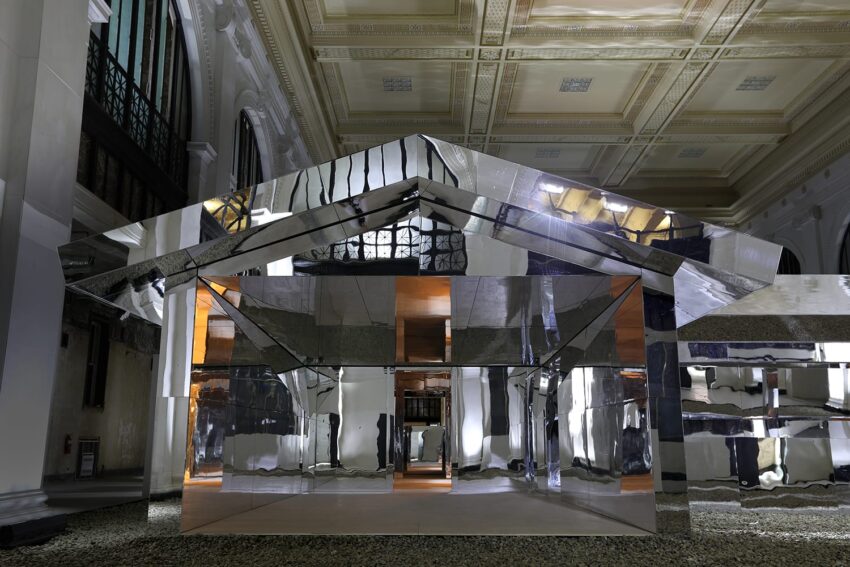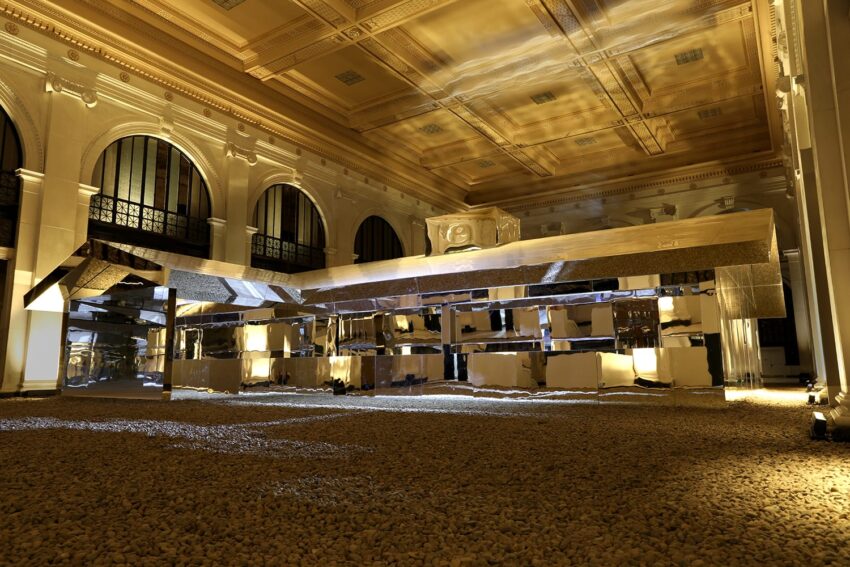Doug Aitken’s Incredible Glass House Gets a Second Life
Remember that much-Instagrammed glass house in Coachella Valley? It’s now in Detroit

When Doug Aitken placed Mirage, a life-size sculpture of a generic American suburban house made entirely out of glass, in Southern California’s Coachella Valley in early 2017, the Venice, California–based artist had no intention to revisit the concept for another iteration. Detroit, however, changed his mind.
In contrast to the desert’s manless and natural environment, the Midwestern city offered Aitken a sense of bygone industrial zeal, which seemed perfect for re-creating a relic of middle-class life, reflecting its surroundings in an otherworldly manner, day and night. As an American city awash in abandoned buildings with mesmerizing architecture and ghostly ambiances, Detroit is brutally stripped from commercial and social vibrancy of metropolises such as New York or Los Angeles—however, Aitken notes that he “avoided the clichés” in his search for the right exhibition venue. “I wasn’t interested in that vernacular after encountering a grassroots community here,” the artist tells Galerie, remembering a talk he gave at a Detroit art school that led to a larger conversation around the unveiling of Mirage Detroit at the State Savings Bank on October 10th.

Located in the heart of the city’s burgeoning downtown among recently opened stores and hip coffee shops, this 1901-built “frozen piece of architecture” has been defunct for 40 years, yet still encapsulates cues from its Gilded Age–era heyday with a dwarfing interior and a gigantic vault standing with heft and nostalgia. Behind this enormous concrete safe, Aitken installed his glass house, a one-story structure absorbing its visitors into a labyrinth of self-reflection and variations of illumination.
Recommended: Abandoned Church Reborn as New Carpenters Workshop Gallery
The artist collaborated with lighting designer Andi Watson to create a smooth, fluctuating glare that’s reminiscent of light reflecting on the surface of water. Best known for his work with the British band Radiohead, Watson challenges the static nature of the imposing stone architecture with movements of light, bringing the constant change of the world outside into the bank. The work sits atop a bed of stones collected from a local riverbed, adding sound to the texture of the experience as viewers wander around the house to enter from different doors or find their reflections inside.

On opening night, the audience accumulated in a line around the block to have a chance to see the house. Inside, many were trying to capture their ethereal reflections on the house’s glass walls or ceiling before a mini-concert by Jónsi, a member of the Icelandic band Sigur Rós, started. The light accompanying the musician’s equally transient tunes throughout the adjacent rooms orchestrated a ghostly aura on par with the building’s bygone history.
When asked about the inevitable extension of the work on Instagram, Aitken responds, “How the viewer sees the work is a part of an evolution, but I don’t think Mirage Detroit particularly amplifies the social media process.” According to the artist, the experience marks an existential level where the viewer invents their reality and the reflections, proving their presence in that place and time.
Mirage Detroit will be open until February 2019 at the State Savings Bank on West Congress Street.